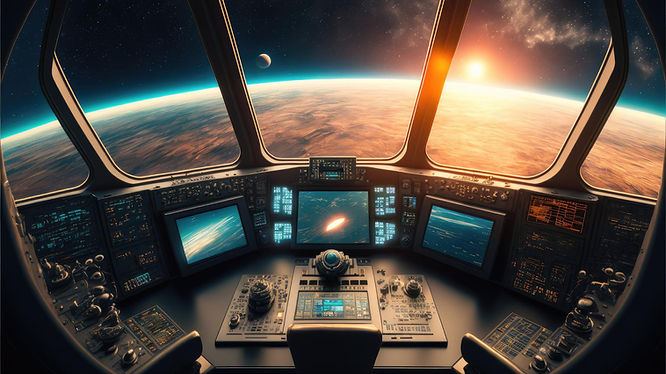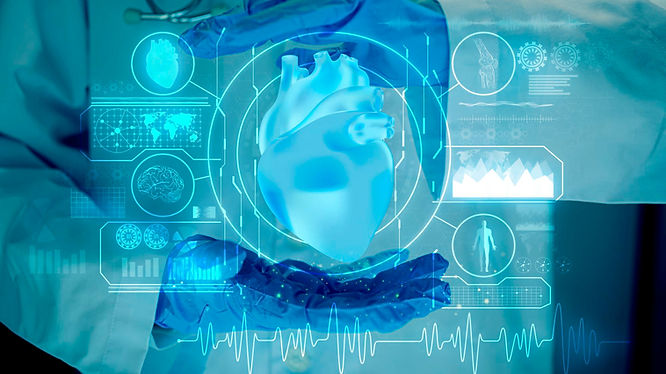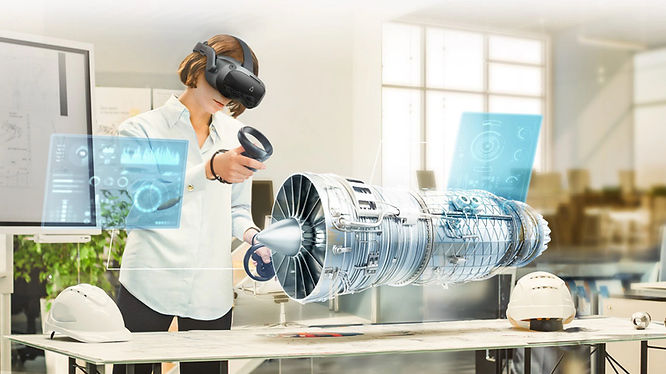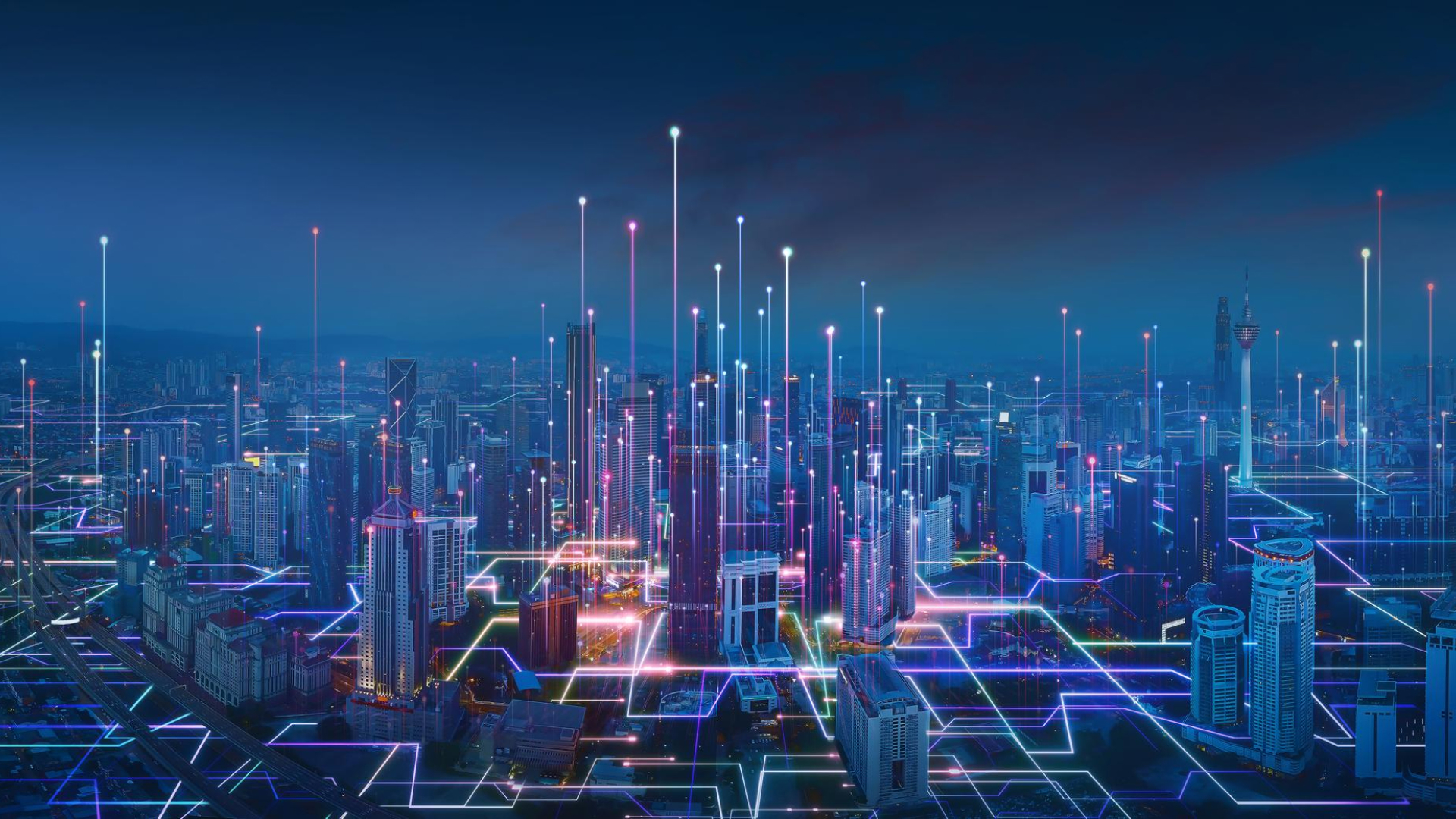Digital Twins: The Future of Smart Cities, Urban Planning, and Healthcare?
Digital twins have recently been taking the world by storm, creating unique solutions to age-old problems. But did you know digital twins have existed for over 50 years?
Emergence of the digital twin.
On April 14th, 1970, the whole world had been cheering for Apollo 13’s successful launch into space. Six and a half minutes after the broadcast, an oxygen tank had exploded, damaging the ship’s main engine and losing the oxygen needed to survive the completed space mission. So how did NASA save a spacecraft and its crew 200,000 miles away without direct human intervention?
The space crew would have to manually pilot the spacecraft back to Earth, so engineers worked night and day to simulate the actions the space crew would need to take on Apollo 13’s digital twin. As their simulations recreated the conditions the spacecraft and crew were in, the digital twin allowed for trial and error without real risk.

Digital twin technology has only gotten better over the past half-century with the emergence of VR and virtual platforms like VIVERSE. Nowadays, a digital twin is a virtual representation of a real-life counterpart. It runs through the physical version’s life cycle with simulations that use a combination of real-time data gathered from sensors and artificial intelligence. Simply put, a digital twin is an extremely detailed and true-to-life model of something in the real world. It provides crucial information in an accurate manner so that it can be studied and used to improve the efficiency of the physical version.
From urban planning initiatives to building a full digital heart, the applications of digital twins have expanded exponentially, especially with the adoption of VR technology.
Learn more: 4 Real-life Digital Twin Examples You Should Know
The world starts twinning.
The influence of digital twins on the real world was made evident through Google Maps, as many realized that simulating routes based on real-time traffic updates was akin to looking into the future. Large companies like Nvidia and BMW have implemented digital twins for designing factory layouts, work procedures, and even equipment placements to streamline processes, increase worker safety, and simulate efficiency.
City governments have started to implement digital twins in urban planning by making the maintenance of public landmarks more agile and proactive as opposed to reactive. This has helped save lives, as with the digital twin of a bridge in Norway that uses real-world sensors to reveal when the bridge’s structural integrity may be compromised.
Digital twins are already saving lives and revolutionizing urban planning and construction in Norway.
Beyond landmarks, digital twins have moved to an even greater scale with entire digital twin cities, called smart cities, which allow governments to streamline their city monitoring, planning, and management.
Smart cities around the world.
Singapore has been established as the world’s first complete digital twin, with the entire country’s buildings, roads, and other urban development efforts mapped out virtually. After being devastated by a flood in 2011, Singapore’s efforts to create a complete digital twin improved the government’s abilities in risk management, location planning, and coastal protection planning.
Other countries are not far behind. Finland’s capital, Helsinki, has produced a city model with calculated data on building assessments, energy usage analysis, and more. Next to Helsinki, the city of Espoo has also digitized its building construction process, revealing what pre-built buildings will look like before construction and estimating the benefits and usability of other projects in the area.
Switzerland, meanwhile, has implemented smart streetlights in Zurich that use sensors to collect environmental data and measure traffic. South Korea looks to combine analysis of urban traffic, air quality, and potential crime patterns with their 5G capabilities to create the ultimate smart city.
Be on the lookout for even more savvy cities in the future.

Creating a copy of you.
As digital twins thrive in manufacturing and construction, one may wonder if they can also be used for medical and humanitarian efforts. Enter the concept of the digital double, which is a copy of a person (e.g., an avatar) made with data.
Digital doubles use AI to process the raw data obtained from sensors and recognize patterns in the data. While digital twin objects have sensors to identify how their physical copies would react in their environments, digital doubles use the data fed to them — such as buying habits, diet, and results from surveys or health checkups — to analyze what choices real humans could make. The results can be scaled to make predictions about communities or society as a whole.
Digital twins allow for major breakthroughs to be made in public health as many current medical solutions are reactive rather than predictive. Examples can be seen in the recent interest in using digital twins to manage multiple sclerosis due to the disease’s complexity. Using vast amounts of data to create digital prototypes of humans has been seen to benefit preventative treatment. Digital twins are also used in the pharmaceutical industry, as with the creation of a digital twin liver and the testing of drug treatments on it.
Transitioning from reactive solutions (e.g., medicine for when you get sick, surgery for existing complications, etc.) to predictive solutions allows for big steps in preventing risks related to drug ingredients, dosages, and side effects.

Digital twins exist in healthcare, too, as with virtual copies of hearts and other organs. By digitally recreating the structure and movements of a human, the digital twin of a heart works like a physical heart would, allowing drugs, implants, and surgery to be simulated and tested. While the human body can be hard to replicate, work is currently being done to create digital twins of the lungs and other organs.
How do digital twins work?
The concept of digital twins is fairly simple — make a virtual copy of a physical object and simulate its life cycle realistically. However, the technology behind digital twins can be fairly complicated.
The basis of digital twins lies in semantic data structuring, which is the sorting of relevant information gathered from sensors that provide data about the real-world object. This information needs to be readable by AI so it can be processed and used to improve the digital copy.
The data taken from the physical copy is sorted and applied to the digital twin using simulations, physics, and logic. AI then analyzes the results to help form a 3D representation, which engineers and scientists use to evaluate the best course of action.
The importance of syncing and accuracy.
The most important aspect of a digital twin is how we can use it to gather, process, and apply real-time data. As ordinary simulations are conducted with only previously obtained information and on smaller scales, their results may only focus on a single element at one specific point in time.
Digital twins, on the other hand, can help us run multiple simulations on multiple elements with constantly updated information, providing results based on real-time data. This continuous syncing of data results in a digital object that gets updated with every minor change that happens to its real-life counterpart.

Data accuracy is also a priority in maintaining an effective digital twin. Data with the wrong parameters or incorrect measurements defeats the purpose of simulating realistic scenarios. In order for a digital twin to simulate realistic actions, the information it is fed also has to be accurate.
The syncing and accuracy of data enable more realistic simulations, providing results that factor in unexpected real-world situations. This helps us understand our world’s unpredictability and create masterful products that are ready for what our world throws at them.
The challenges for digital twins.
Data privacy and security concerns regarding digital twins go both ways. The information generated by digital twins can be accessed just as easily as the information they use. While digital doubles feed primarily off big data from consumer purchases and gathered data from surveys and polls, it’s crucial that this information’s anonymity and safety are maintained, as leaks could expose private information.
Another concern is the ethical dilemma of hyper-accurate digital twins and doubles. Accuracy means that the digital copy is highly realistic, but this could lead to the creation of deep fakes, sensitive information being revealed, and simulations that result in confidential information being made public. Security and anonymity are important but difficult elements of digital twins to police, and may be a larger problem in the future.
What’s in the future for digital twins?
While digital twins are being adopted in various industries, this emerging technology is still in its beginnings, as a staggering number of resources needs to be poured into making them realistic and accurate.
On the flip side, integrating virtual reality into the digital twin creation process can increase digital twins’ potency. A digital twin provides us with a translation of data in the form of a model, and VR helps us observe the model as realistically as possible.

